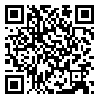Mon, Dec 8, 2025
Volume 12, Issue 2 (Spring 2022)
PTJ 2022, 12(2): 85-92 |
Back to browse issues page
Download citation:
BibTeX | RIS | EndNote | Medlars | ProCite | Reference Manager | RefWorks
Send citation to:



BibTeX | RIS | EndNote | Medlars | ProCite | Reference Manager | RefWorks
Send citation to:
Mashhadi M, Sahebozamani M, Daneshjoo A, Adeli S H. The Effect of Respiratory and Core Stability Tele-exercises on Pulmonary and Functional Status in COVID-19 Survivors: A Randomized Clinical Trial. PTJ 2022; 12 (2) :85-92
URL: http://ptj.uswr.ac.ir/article-1-530-en.html
URL: http://ptj.uswr.ac.ir/article-1-530-en.html
1- Department of Sports Injuries and Corrective Exercises, Faculty of Sport Science, Shahid Bahonar University of Kerman, Kerman, Iran.
2- Department of Internal Medicine, Faculty of Medicine, Qom University of Medical Sciences, Qom, Iran.
2- Department of Internal Medicine, Faculty of Medicine, Qom University of Medical Sciences, Qom, Iran.
Abstract: (3607 Views)
Purpose: Various complications, including physical, cognitive, and functional disorders, have been identified in patients discharged and recovered from COVID-19. Pulmonary rehabilitation (PR) can be considered a strategy for these disorders. This study aimed to investigate the effect of respiratory and core stability tele-exercises on pulmonary function and functional capacity in survivors discharged and recovered from COVID-19.
Methods: This randomized clinical trial study was performed in Qom Province, Iran, in 2021. Thirty discharged patients voluntarily participated in this study and were randomly divided into two groups of 15 patients. Eventually, 27 patients in two groups of exercise (13 patients) and control (14 patients) completed this study. The exercise group performed respiratory and core stability tele-exercise for 8 weeks. Before and after the exercise program, pulmonary function, including forced vital capacity (FVC), forced expiratory volume in 1 s (FEV1), FEV1/FVC ratio, and six-minute walk test (6MWT) were assessed in both groups. Mixed repeated measures test in SPSS software v. 27, was used to compare the mean of pre-test-post-test information of the groups. The significance level for this study was considered 0.05.
Results: In the exercise group, a significant improvement was observed in FVC, FEV1, and 6MWT after the intervention (P≤0.05), but no significant difference was observed in the FEV1/FVC ratio (P>0.05). Furthermore, a significant interaction was observed in 6MWD, FVC, FVC (predicted), FEV1, and FEV1 (predicted). However, in FEV1/FVC ratio, no significant interaction was observed between the two groups (P>0.05).
Conclusion: The results of the study showed that in the new crisis resulting from persistent complications of COVID-19, respiratory and core stability exercises by the tele-exercise method could be used as a helpful method in the rehabilitation of patients discharged and recovered from COVID-19 disease.
Methods: This randomized clinical trial study was performed in Qom Province, Iran, in 2021. Thirty discharged patients voluntarily participated in this study and were randomly divided into two groups of 15 patients. Eventually, 27 patients in two groups of exercise (13 patients) and control (14 patients) completed this study. The exercise group performed respiratory and core stability tele-exercise for 8 weeks. Before and after the exercise program, pulmonary function, including forced vital capacity (FVC), forced expiratory volume in 1 s (FEV1), FEV1/FVC ratio, and six-minute walk test (6MWT) were assessed in both groups. Mixed repeated measures test in SPSS software v. 27, was used to compare the mean of pre-test-post-test information of the groups. The significance level for this study was considered 0.05.
Results: In the exercise group, a significant improvement was observed in FVC, FEV1, and 6MWT after the intervention (P≤0.05), but no significant difference was observed in the FEV1/FVC ratio (P>0.05). Furthermore, a significant interaction was observed in 6MWD, FVC, FVC (predicted), FEV1, and FEV1 (predicted). However, in FEV1/FVC ratio, no significant interaction was observed between the two groups (P>0.05).
Conclusion: The results of the study showed that in the new crisis resulting from persistent complications of COVID-19, respiratory and core stability exercises by the tele-exercise method could be used as a helpful method in the rehabilitation of patients discharged and recovered from COVID-19 disease.
Type of Study: Research |
Subject:
Sport injury and corrective exercises
Received: 2022/03/1 | Accepted: 2022/06/19 | Published: 2022/04/1
Received: 2022/03/1 | Accepted: 2022/06/19 | Published: 2022/04/1
Send email to the article author
| Rights and permissions | |
 |
This work is licensed under a Creative Commons Attribution-NonCommercial 4.0 International License. |






